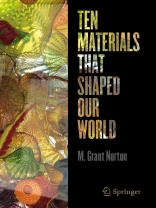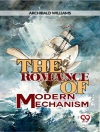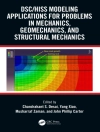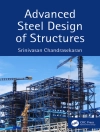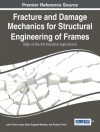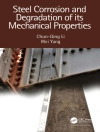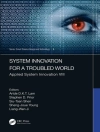This book examines ten materials—flint, clay, iron, gold, glass, cement, rubber, polyethylene, aluminum, and silicon—explaining how they formed, how we discovered them, why they have the properties they do, and how they have transformed our lives. Since the dawn of the Stone Age, we have shaped materials to meet our needs and, in turn, those materials have shaped us.
The fracturing of flint created sharp, curved surfaces that gave our ancestors an evolutionary edge. Molding clay and then baking it in the sun produced a means of recording the written word and exemplified human artistic imagination. As our ability to control heat improved, earthenware became stoneware and eventually porcelain, the most prized ceramic of all. Iron cast at high temperatures formed the components needed for steam engines, locomotives, and power looms—the tools of the Industrial Revolution. Gold has captivated humans for thousands of years and has recently found important uses in biology, medicine, and nanotechnology. Glass shaped into early and imperfect lenses not only revealed the microscopic world of cells and crystals, but also allowed us to discover stars and planets beyond those visible with the naked eye. Silicon revolutionized the computer, propelling us into the Information Age and with it our interconnected social networks, the Internet of Things, and artificial intelligence.
Written by a materials scientist, this book explores not just why, but also how certain materials came to be so fundamental to human society. This enlightening study captivates anyone interested in learning more about the history of humankind, our ingenuity, and the materials that have shaped our world.
Spis treści
Chapter 1. Introduction.- Chapter 2. Flint –
The Material of Evolution.- Chapter 3. Clay –
The Material of Life.- Chapter 4. Iron –
The Material of Industry.- Chapter 5. Gold –
The Material of Empire.- Chapter 6. Glass –
The Material of Clarity.- Chapter 7. Cement –
The Material of Grandeur.-
Chapter 8. Rubber –
The Material of Possibilities.- Chapter 9. Polyethylene –
The Material of Chance.- Chapter 10. Aluminum –
The Material of Flight.- Chapter 11. Silicon –
The Material of Information.- Conclusion.
O autorze
M. Grant Norton is Dean of the Honors College and Professor in the School of Mechanical and Materials Engineering at Washington State University. He obtained his Ph.D. in Materials from Imperial College and spent a two-year postdoctoral at Cornell University before joining the Washington State University faculty in 1991. In 2003 and 2004, he was an Air Force Office of Scientific Research (AFOSR) Faculty Research Associate at Wright-Patterson Air Force Base in Ohio and spent the 1999/2000 academic year as a Visiting Professor at Oxford University. From 2004 to 2007, he held the Herman and Brita Lindholm Endowed Chair. In 2017, he was a participant in the German-American Fulbright Commission Seminar for U.S. Administrators in International Education. He has held Visiting Professor positions at the Chien-Shiung Wu Honors College at Southeast University in Nanjing and as a Global Faculty Fellow at Tecnológico de Monterrey.
Professor Norton’s research is primarily focused on applicationsof nanomaterials in clean energy and the life sciences. He is the author or co-author of over 200 papers in the archival literature, several book chapters and patents, and two textbooks including Ceramic Materials: Science and Engineering, which has over 5.5 million downloads. He serves as Deputy Editor-in-Chief of Journal of Materials Science, on the Editorial Board of Advanced Structural and Chemical Imaging, and on the International Editorial Board of Journal of Materials Education.
Prior to entering academia, he worked for two major European multinationals: Cookson Group PLC and Heraeus Gmb H. He has consulted for a number of companies and organizations including the United States Air Force and REC Silicon, the world’s largest producer of silicon materials. From 2009 to 2011, he was on the Board of Directors of the Washington Technology Center (a gubernatorial appointment). He currently serves on several boards including the advisory board for the Thomas S. Foley Institute for Public Policy and Public Service, the Fulbright National Screening Committee, and the Engineering Accreditation Commission of ABET.
